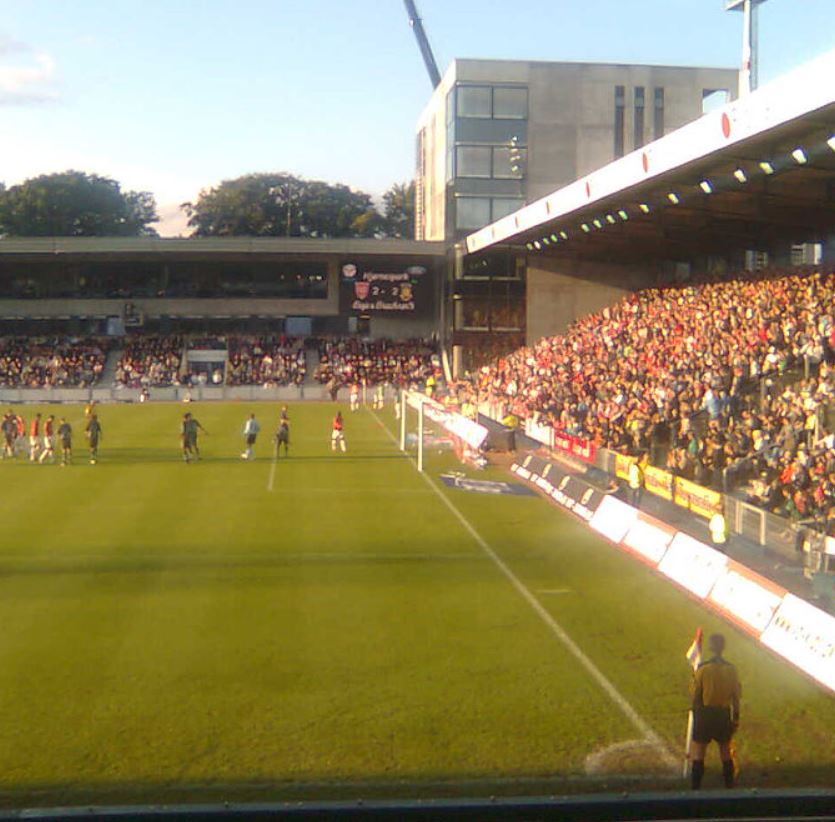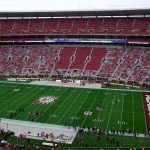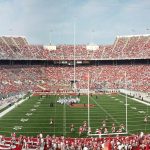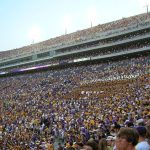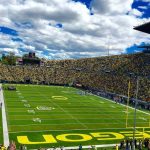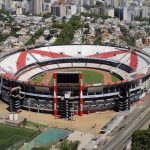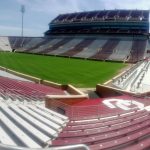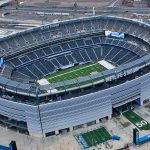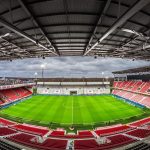Like in most European countries, the national game in Denmark is football. There are well over 300,000 payers in the country and over 1,800 football clubs.
The clubs in the highest division of football in Denmark, the Danish Superliga, play their games in amazing arenas all across the country.
This also applies to the Danish national team which has been remarkably successful over the years.
They won the UEFA Euro 1992 Championships and reached the quarter-finals of the World Cup in 1998, not too shabby for such a small country.
In this article, you’ll discover a list of the biggest stadiums in Denmark so you can see where Danish football clubs play their home games.
1. Parken Stadium
- Location: Indre Østerbro, Copenhagen
- Capacity: 38,065
Parken Stadium is the biggest stadium in Denmark and, in my opinion, also the most impressive one. It’s the home of Danish football club F.C. Copenhagen, the most successful football club in Danish history and one of the most successful in all of Scandinavia.
It’s also here that the Danish national football team plays their home games. One end behind the goal resembles a large office building and houses a three Michelin star restaurant called “Geranium” on the 8th floor.
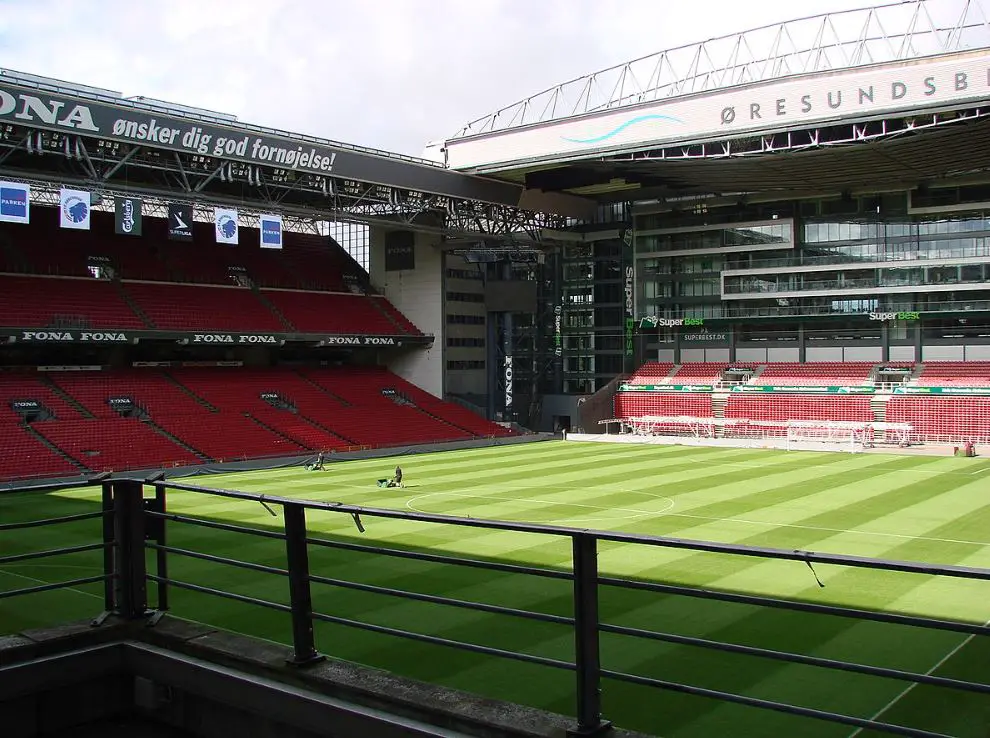
2. Brøndby Stadium
- Location: Brøndbyvester
- Capacity: 29,000
Brøndby Stadium is the home stadium of Brøndby IF, another popular football club in Denmark. The stadium was opened in 1966 but didn’t have a single stand back then. The main expansion phase was completed in 2000 when the capacity was raised to 31,500.
This included many standing places and after some remodifications in the 2000s, the stadium’s capacity was reduced to 29,000 seats. When the Parken Stadium is unavailable, this stadium in Denmark is also sometimes used to host games of the Danish National Team.
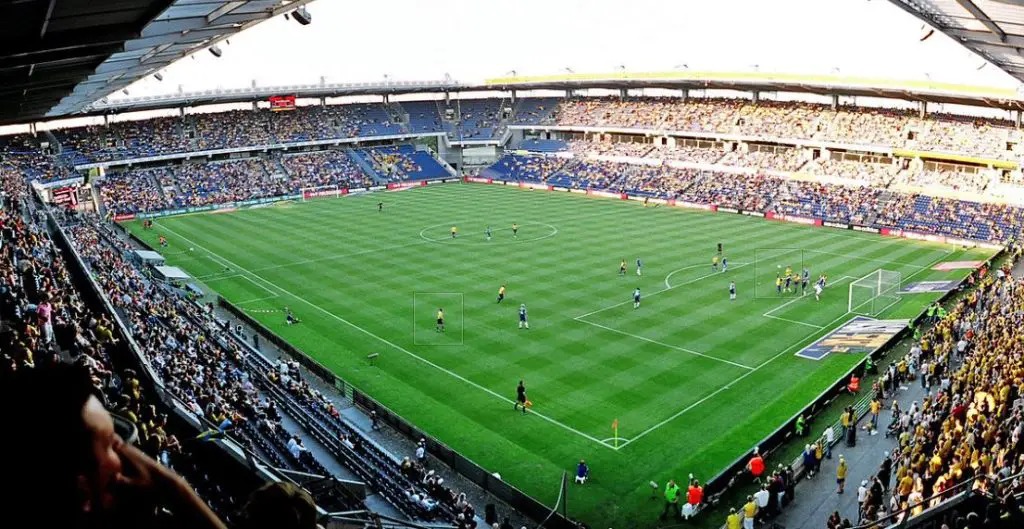
3. Aarhus Stadium
- Location: Aarhus
- Capacity: 19,433
Aarhus Stadium is a huge stadium in the Danish city of Aarhus and is part of a large sports complex known as the Aarhus Sports Park. This is a historic place because it’s here that the Aarhus Gymnastikforening was founded in 1880.
The original stadium was inaugurated in 1920 and has served as the home venue of the local football team ever since. The stadium has been renovated several times over the years including projects completed in 1993, 1998, and 2004.
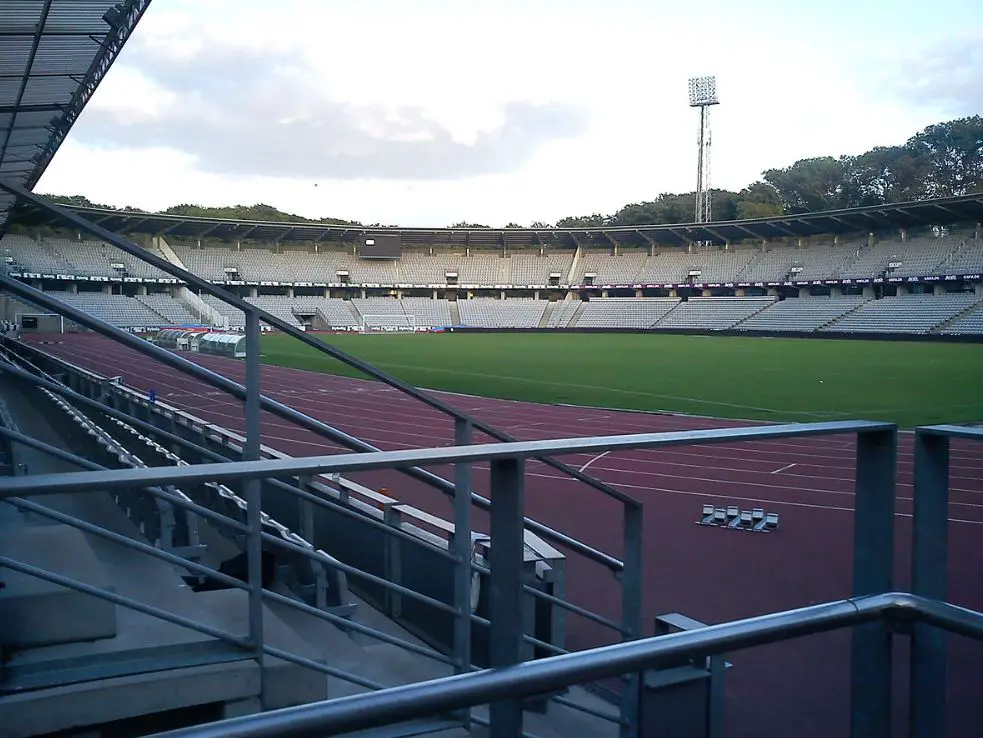
4. Esbjerg Stadium
- Location: Esbjerg
- Capacity: 16,942
Esbjerg Stadium is known today as the Blue Water Arena and is the home ground of Esbjerg fB, the local football club that competes in the Danish Superliga. The stadium was opened in 1955 and renovated in 1999, 2004, and 2009.
The current capacity of 16,942 features 11,451 seats and the rest are standing places. Apart from 2 games of the Danish National Team when games were banned in Copenhagen, the stadium also regularly serves as the venue for international youth games.
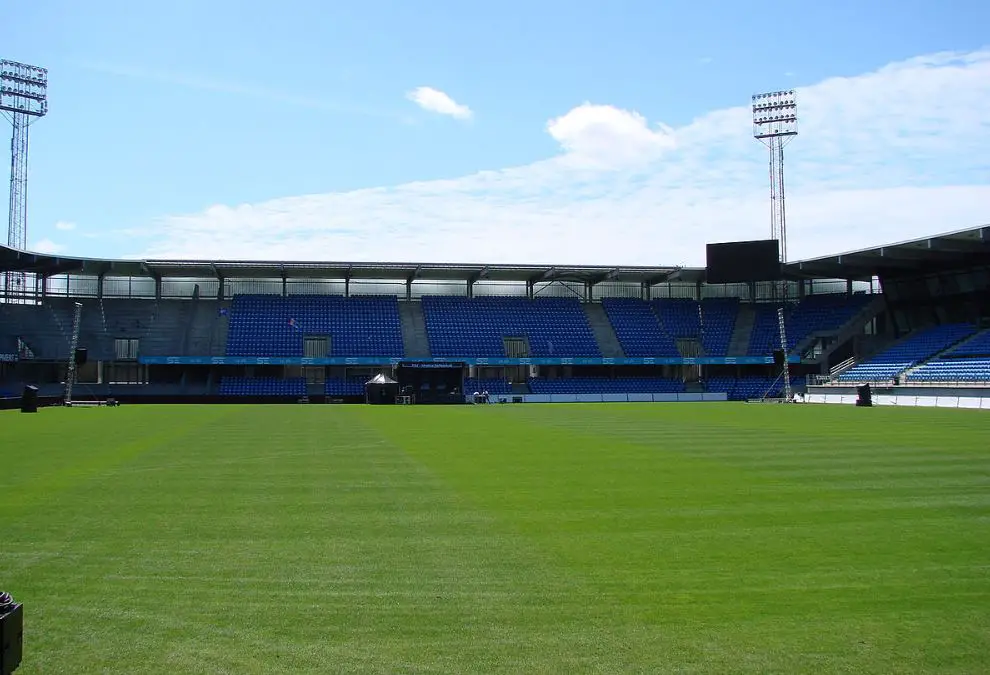
5. Odense Stadium
- Location: Odense
- Capacity: 15,790
Odense Stadium is the football arena in Odense, the third-largest city in Denmark, and the home stadium of the local football team Odense Boldklub. It has served this purpose ever since it first opened its doors in 1941.
The stadium doesn’t look nearly as it did back then as it underwent several renovations and expansions, including projects completed during the 1990s and 2000s. It’s a cozy stadium in which the stands are very close to the playing field.
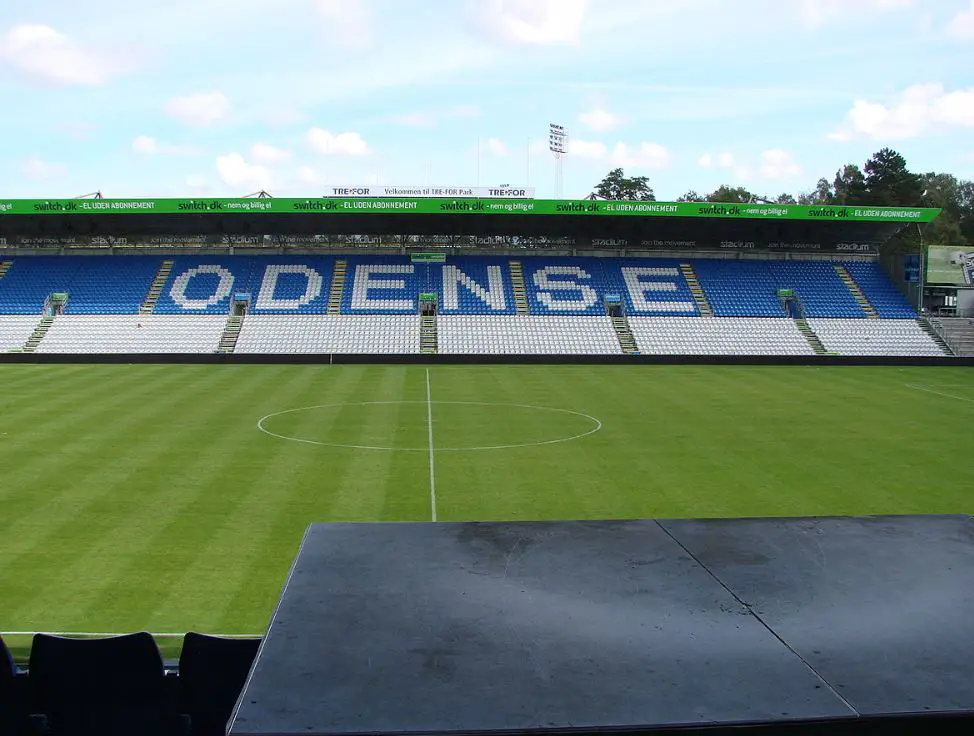
6. Aalborg Stadium
- Location: Aalborg
- Capacity: 14,135
Aalborg Stadium is known today as the Aalborg Portland Park and is the home of AaB, a football club sometimes referred to as Aalborg BK. It’s another historic stadium in Denmark that has a history that goes back to the year 1920.
The stadium underwent two major renovations, once in 1960 and another in 2002 which gave the stadium its current layout. The stadium has a capacity of 14,135 of which only 8,997 are seats. During international games, the capacity of the stadium is 10,500.
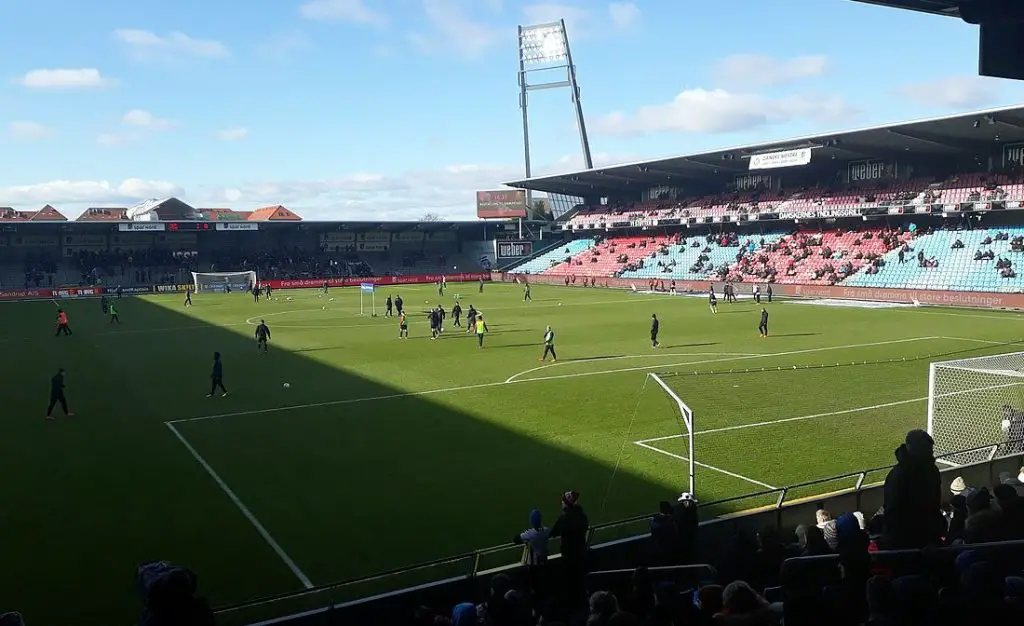
7. Gladsaxe Stadium
- Location: Søborg, Gladsaxe
- Capacity: 13,800
Gladsaxe Stadium is a stadium in the Copenhagen metropolitan area that is mostly used for football games. Remarkably, it’s the biggest stadium in Denmark that isn’t the home of a team that competes in the Danish Superliga.
It’s the home of Akademisk Boldklub, a team that competes in the third tier of Danish football, and local team Gladsaxe-Hero Boldklub. The stadium was completed between 1938 and 1940 and improved in 1998 with two stands along the long sides.
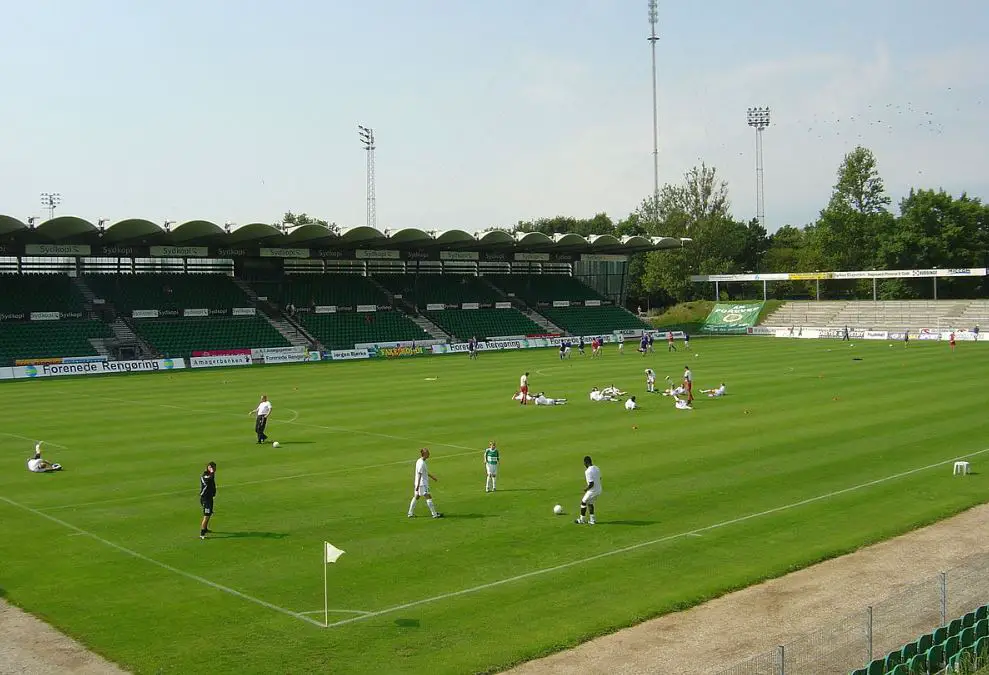
8. Valby Idrætspark
- Location: Valby, Copenhagen
- Capacity: 12,000
Valby Idrætspark is another stadium in Copenhagen that is mostly used for football matches but which isn’t home to a Danish Superliga team. It’s the home of BK Fremad Valby which competes in the fifth tier of Danish football.
This location was first used for football games in 1913 and the stadium underwent two major renovations since, one in 1965 and another in 2003. The beautiful main stand of the stadium dates back to this project in the early 21st century.
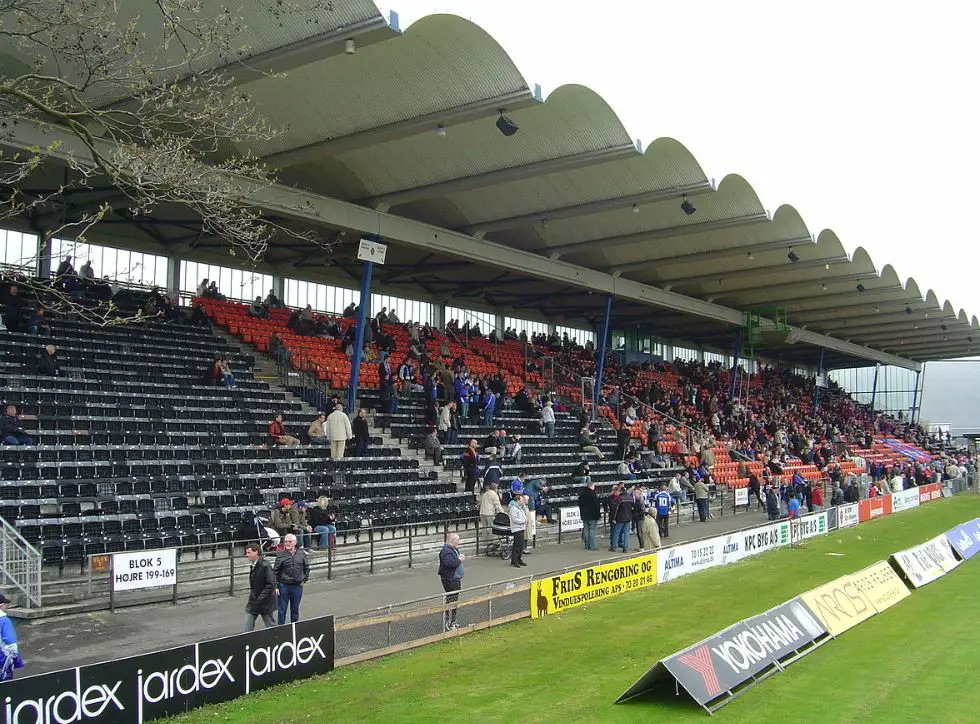
9. MCH Arena
- Location: Herning
- Capacity: 11,432
MCH Arena is a football stadium in Herning that is part of the large MCH Messecenter Herning complex. It’s the largest exhibition and entertainment complex in Denmark which is quite remarkable because Herning only has a population of just over 50,000 inhabitants.
The stadium is the home of FC Midtjylland, a football club in Denmark that has been very successful in the past years. They won the Danish Superliga in 2015, 2018, and 2020. It’s also one of the newest stadiums in Denmark because it was constructed between 2003 and 2004.

10. Vejle Stadium
- Location: Vejle
- Capacity: 11,060
Vejle Stadium is the home ground of Vejle Boldklub, one of the most successful football clubs in Danish history with 5 Danish Superliga titles and 6 Danish Cup wins. Unfortunately, the club was relegated from the Danish Superliga in 2022.
The stadium has a distinctive design and is dominated by two towers located on each end of the main stand that can be used for business purposes. It’s another relatively new stadium that first opened its doors in the year 2008.
